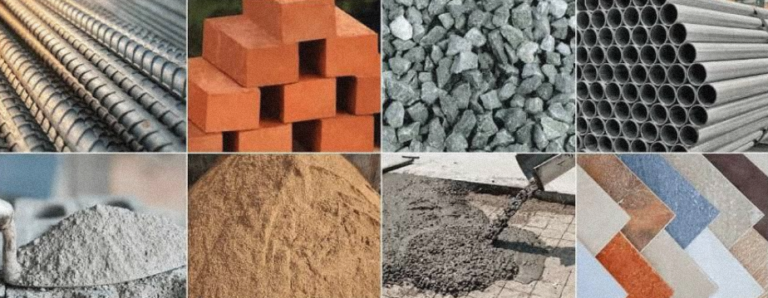Pros and Cons for 5 Axis CNC

In modern manufacturing, Computer Numerical Control (CNC) machining is a cornerstone of precision and efficiency. Among the various types of CNC machining, 5-axis CNC technology represents the peak of innovation and capability. Unlike traditional 3-axis CNC machines, which move cutting tools along three linear axes (X, Y, and Z), 5-axis CNC machines offer two additional rotational axes, allowing for flexibility and complexity in machining operations.
The capacity to control a workpiece from practically any angle opens up new options for fabricating delicate and precise parts, making 5-axis CNC technology important in aerospace, automotive, and medical device manufacturing. This sophisticated machining capability not only improves part precision and quality but also increases productivity and efficiency by eliminating the need for repeated setups and manual interventions.
However, these developments bring new obstacles and considerations. Understanding the advantages and disadvantages of 5-axis CNC machining is critical for manufacturers aiming to maximize the technology’s potential. This article explores the advantages and disadvantages of 5 axis CNC, providing a comprehensive overview to help you determine whether this cutting-edge technology is the right fit for your production needs.
Pros of 5 Axis CNC
Here are the top advantages of 5 axis CNC machining:
Enhanced Precision and Accuracy
The ability of 5-axis CNC machines to handle complicated forms and geometries is still being determined. They excel at producing delicate parts with great precision, essential in aerospace and medical devices, where tolerances are extremely tight. The simultaneous movement of the five axes allows smoother transitions and finer details, lowering the possibility of errors and departures from design standards.
Another big benefit is the reduction in the requirement for different settings. Traditional 3 Axis CNC machining frequently necessitates relocating the workpiece numerous times to produce the required form, increasing the likelihood of misalignment and errors. With 5 Axis CNC, parts can be machined from different angles in a single setup, ensuring consistent accuracy throughout the production process and reducing the chances of human error.
Increased Efficiency and Productivity
5 Axis CNC machines increase manufacturing efficiency by lowering the setups needed to manufacture an item. The ability to process multiple sides of a workpiece in a single operation results in faster production times since there is less downtime for changing setups and fixtures. This is especially useful for small batch production or custom products when setup time can be a significant amount of total production time.
Greater efficiency also applies to the machining process itself. 5 Axis CNC machines can increase productivity by allowing for uninterrupted machining. This capacity is especially valuable in businesses that require short turnaround times and high-volume production, allowing producers to fulfil tight deadlines without sacrificing quality.
Improved Surface Finish
One of the most important benefits of 5 Axis CNC machining is the higher surface polish it produces. The ability to approach the part from various angles allows tools to be positioned optimally, reducing tool marks and achieving a smoother surface. This is critical in applications where surface quality is an important performance metric, such as mold and die manufacturing.
Furthermore, the increased surface polish lowers the need for additional finishing steps. Parts with fewer tool marks and better overall quality typically require less manual polishing or extra machining, saving time and money. This not only enhances the parts’ aesthetic and functional quality but also streamlines the production workflow, making it more efficient and cost-effective.
Versatility in Machining
5 Axis CNC machines are incredibly versatile, handling various materials, ranging from metals and alloys to plastics and composites. This versatility makes them perfect for multiple industries and applications, including automotive, aerospace, medical, and energy sectors. Whether creating complex components for a jet engine or precise surgical instruments, 5 Axis CNC can easily handle diverse machining needs.
The ability to machine intricate and complex parts in a single setup also contributes to this versatility. Manufacturers can produce parts with undercuts, deep pockets, and intricate details without additional fixtures or tools. This flexibility reduces production time and enhances the ability to meet specific design requirements and customer demands.
Reduced Lead Time and Costs
5 Axis CNC machines reduce the number of setups and the necessity for secondary operations, considerably shortening the manufacturing cycle. This reduction in lead time enables manufacturers to respond more quickly to market demands and client orders, giving them a competitive advantage in fast-paced industries.
The efficiency and precision of 5 Axis CNC machining result in cost reductions. With fewer preparations and less manual involvement, labor costs are decreased, and the likelihood of costly errors is reduced. The improved surface polish and precision also result in less material waste and cheaper post-processing expenses. The streamlined production process and shorter lead times result in a more cost-effective manufacturing operation.
Greater Design Flexibility
The advanced capabilities of 5 Axis CNC machines offer greater design flexibility, enabling manufacturers to create more complex and intricate parts that would be challenging or impossible to produce with traditional machining methods. This flexibility allows for innovative design solutions and the ability to meet specific and often unique customer requirements.
This greater design freedom encourages experimentation and rapid prototyping, as manufacturers can quickly and efficiently produce and test new designs. This adaptability is especially valuable in industries like aerospace and automotive, where continuous innovation and rapid iteration are essential for maintaining a competitive edge.
Cons of 5 Axis CNC
Here are the common disadvantages of 5 axis CNC machining:
Higher Initial Investment
One of the primary drawbacks of 5-axis CNC machines is the significant upfront cost. These machines are more expensive than their 3-axis counterparts due to their advanced capabilities and complex design. The initial investment includes not only the cost of the machine itself but also the expenses associated with installation, setup, and any necessary facility upgrades.
Additionally, the maintenance and operating costs for 5 Axis CNC machines are higher. These machines require regular servicing to maintain their precision and performance, and the parts and labor for such maintenance can be costly. These large initial and recurring costs might be financially burdensome for small and medium-sized businesses.
Complex Programming and Operation
Operating a 5-axis CNC machine demands a high level of skill. The programming is far more sophisticated than with 3-axis machines, necessitating an advanced understanding of CNC programming languages and software. This complexity might result in a longer learning curve for operators and programmers, requiring additional training and expertise.
The complexities of the machine’s activities also mean that programming errors can have serious effects. Incorrect commands or tool paths can cause accidents, tool breakage, or workpiece damage, resulting in greater downtime and higher repair and rework costs.
Potential for Errors
The increased complexity of 5 Axis CNC machining introduces a higher potential for errors. While these machines offer greater precision, the many variables involved in their operation can lead to programming, setup, or machining mistakes. These errors can be resources and time costly.
Another significant concern is the risk of collisions. The simultaneous movement of multiple axes requires precise coordination, and any misalignment or miscalculation can result in the tool colliding with the workpiece or the machine itself. Such incidents cause damage and lead to production delays and increased operational costs.
Limited by Machine Capabilities
Despite their advanced features, 5 Axis CNC machines have limitations. The physical constraints of the machine, such as the size of the work envelope and the reach of the cutting tools, can limit the size and type of parts that can be machined. This can be a significant drawback for manufacturers needing large or uniquely shaped components.
Additionally, while 5-axis CNC machines are versatile, they are only sometimes the most efficient choice for high-volume production runs. Their setup times and complexity may make them less suitable for mass production than more specialized machinery designed for specific tasks.
High Learning Curve and Skill Requirements
Using 5 Axis CNC machines takes extensive training and experience. The specialized programming abilities required to operate these devices properly are common, and locating qualified operators can take time and effort. This steep learning curve can lead to longer training times and greater expenditures.
The reliance on highly skilled staff also means that the functioning of 5 Axis CNC machines is susceptible to workforce changes. Losing skilled operators or programmers can disrupt production and reduce the efficiency and quality of machining processes, emphasizing the significance of ongoing training and skill development in the workplace.
Increased Downtime for Maintenance and Repairs
Due to their complexity, maintenance and repairs on 5-axis CNC machines might take longer and require specialized knowledge. Any downtime caused by maintenance or repairs can substantially impact production schedules, especially if spare parts are not readily available or specialized specialists are required for the repairs.
Furthermore, the advanced technology and precision components in 5 Axis CNC machines can be more prone to wear and tear, necessitating more frequent maintenance. This extended downtime can cause production delays and increase the expense of machine maintenance and repairs.
Conclusion
Adoption of 5 Axis CNC machining brings both benefits and obstacles. Plus, this technology provides increased precision, efficiency, better surface finishes, versatility, shorter lead times and costs, and greater design flexibility. These advantages are especially useful in industries that require great precision, such as aerospace, automotive, and medical device manufacture.
However, prominent disadvantages include a large initial investment, sophisticated programming, the possibility of errors, machine restrictions, a steep learning curve, and extended maintenance downtime. These factors can impact overall cost-effectiveness and operational efficiency.
Finally, the choice to invest in 5 Axis CNC machines is based on weighing these benefits and drawbacks against specific industrial needs. For businesses that can leverage their advanced capabilities and manage their challenges, 5 Axis CNC technology can provide a significant competitive edge.





